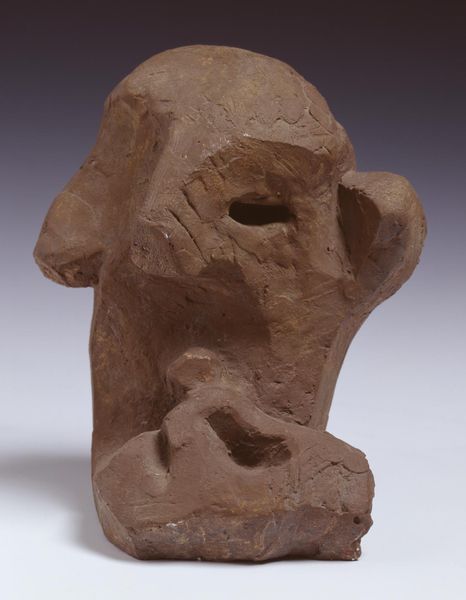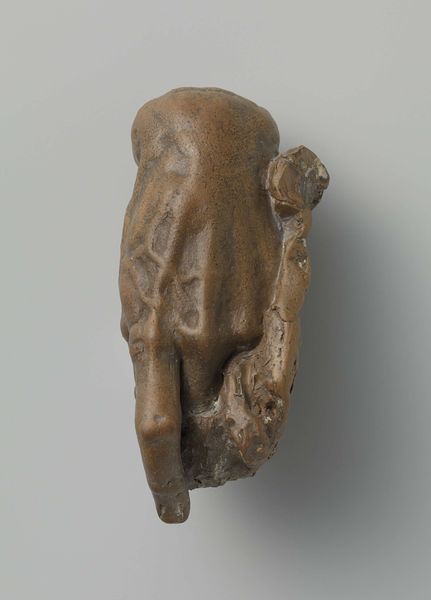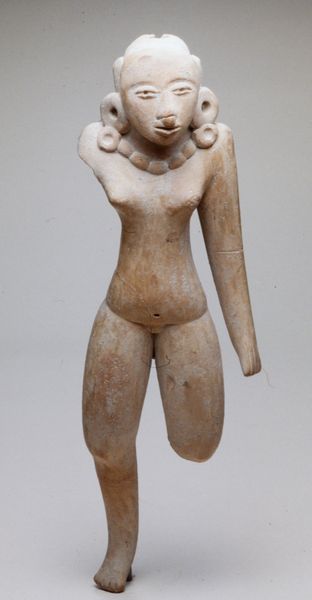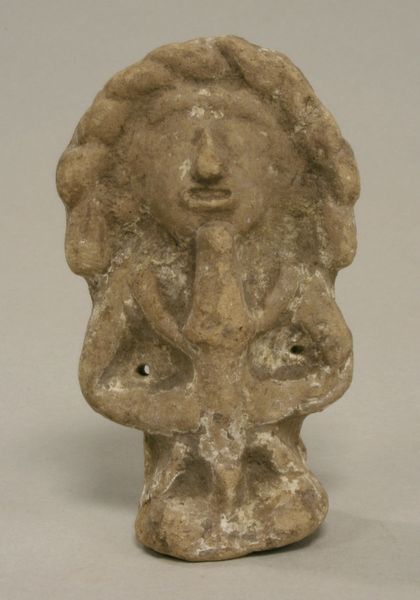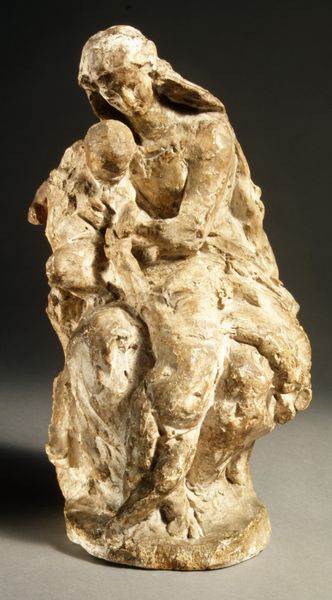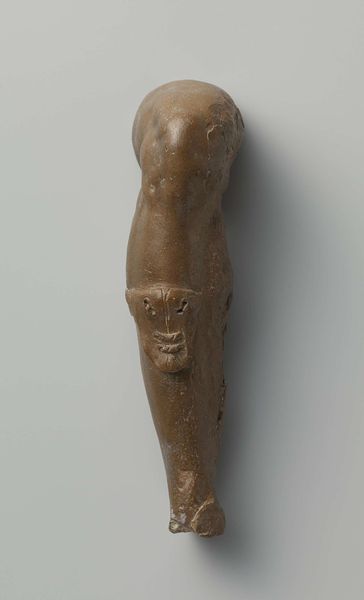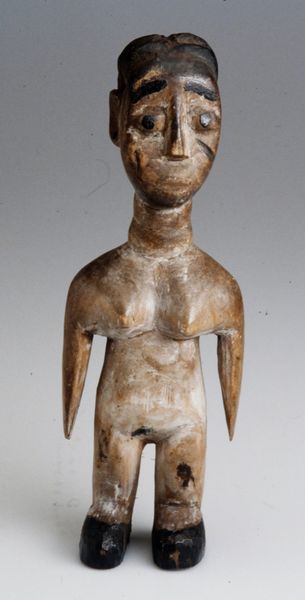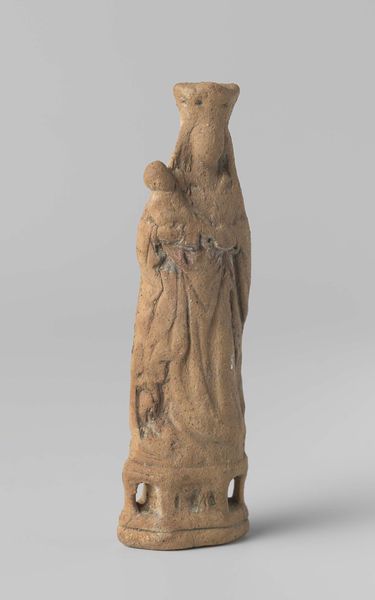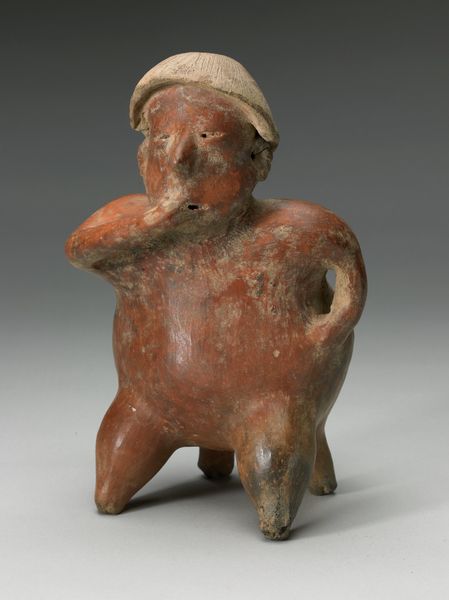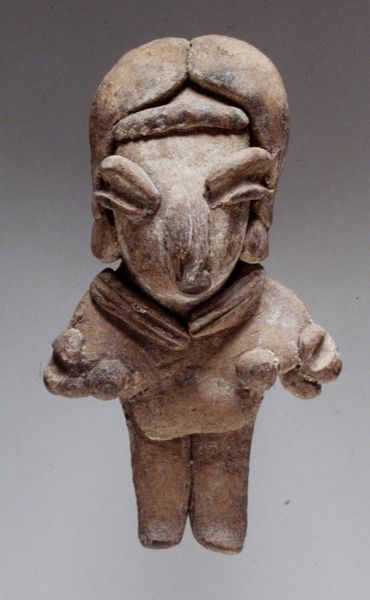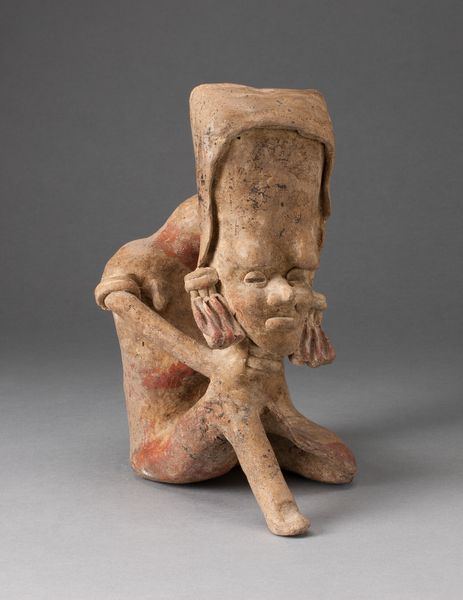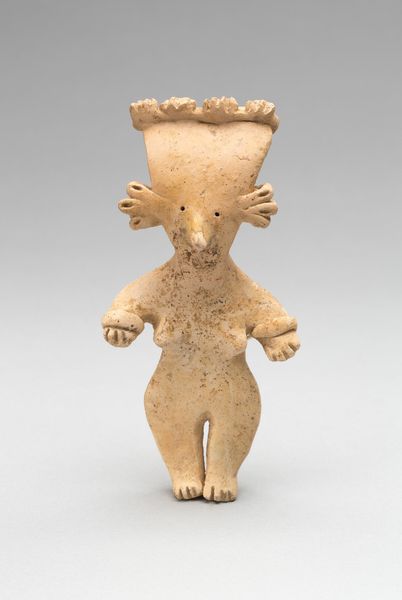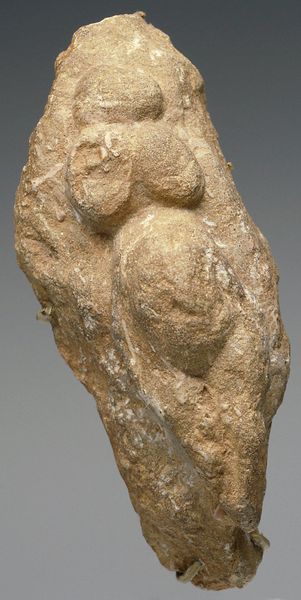
bronze, sculpture
#
portrait
#
sculpture
#
bronze
#
figuration
#
sculpture
#
history-painting
#
academic-art
#
realism
Dimensions: Height: 4 3/4 in. (12.1 cm)
Copyright: Public Domain
Curator: My initial reaction is...discomfort. There’s something raw and exposed about that unfiltered emotion, amplified by the material. Editor: Precisely. This emotive statuette, dating from 1870-1872, is entitled "Boy Crying." Created by Jean-Baptiste Carpeaux, we find it rendered in bronze, here at The Metropolitan Museum of Art. Curator: Bronze seems such a formal, almost defiant choice for representing something so vulnerable. I find myself pondering what drove Carpeaux’s artistic decision here, particularly at a time when the figure and its display became politically charged. Editor: Bronze does seem to amplify the universal symbol of sorrow here. He shields his face with upturned palms – almost childlike in their soft curves. Notice also the bare feet upon the simple plinth, a detail reinforcing ideas about innocence. Do we read into that, perhaps, broader concepts regarding purity being corrupted? Curator: I can definitely see the allusion, considering how the image of the weeping child pervades so much iconography related to injustice. Carpeaux may be reflecting a more expansive commentary of contemporary society. I do find myself curious if this piece might have featured at various Salons—I feel a great deal of public dialogue around its emotional display would prove insightful. Editor: That's a marvelous suggestion. Such events are pivotal in charting its reception. Now, reflecting upon the visual, how poignant that hands—typically symbolic of making or creating—become emblems of inconsolable distress. Carpeaux creates, through a simple and powerful composition, a long meditation on grief. Curator: Yes, and Carpeaux's manipulation of Realism—embracing imperfections and unidealized representation—made it, perhaps, all the more challenging to its contemporary audience who might be accustomed to ideal forms within Neoclassical styles of statuary. The implications of showcasing this piece become increasingly potent upon examination. Editor: I fully agree. Contemplating "Boy Crying" through the lens of its artistic style and its potential sociopolitical reverberations makes viewing it here all the more compelling. Curator: I think I understand its historical importance now far more completely. Editor: Me too!
Comments
No comments
Be the first to comment and join the conversation on the ultimate creative platform.

